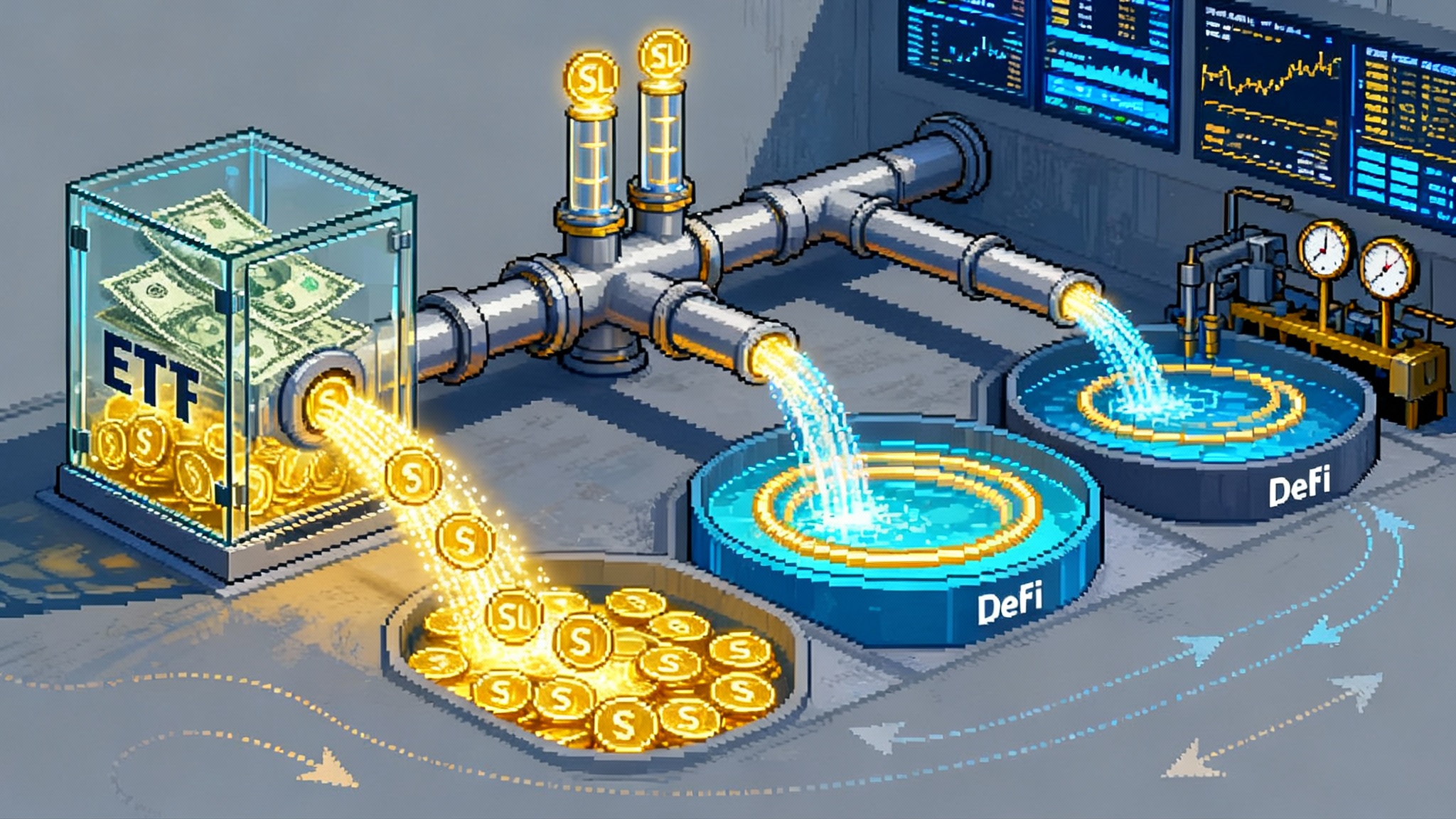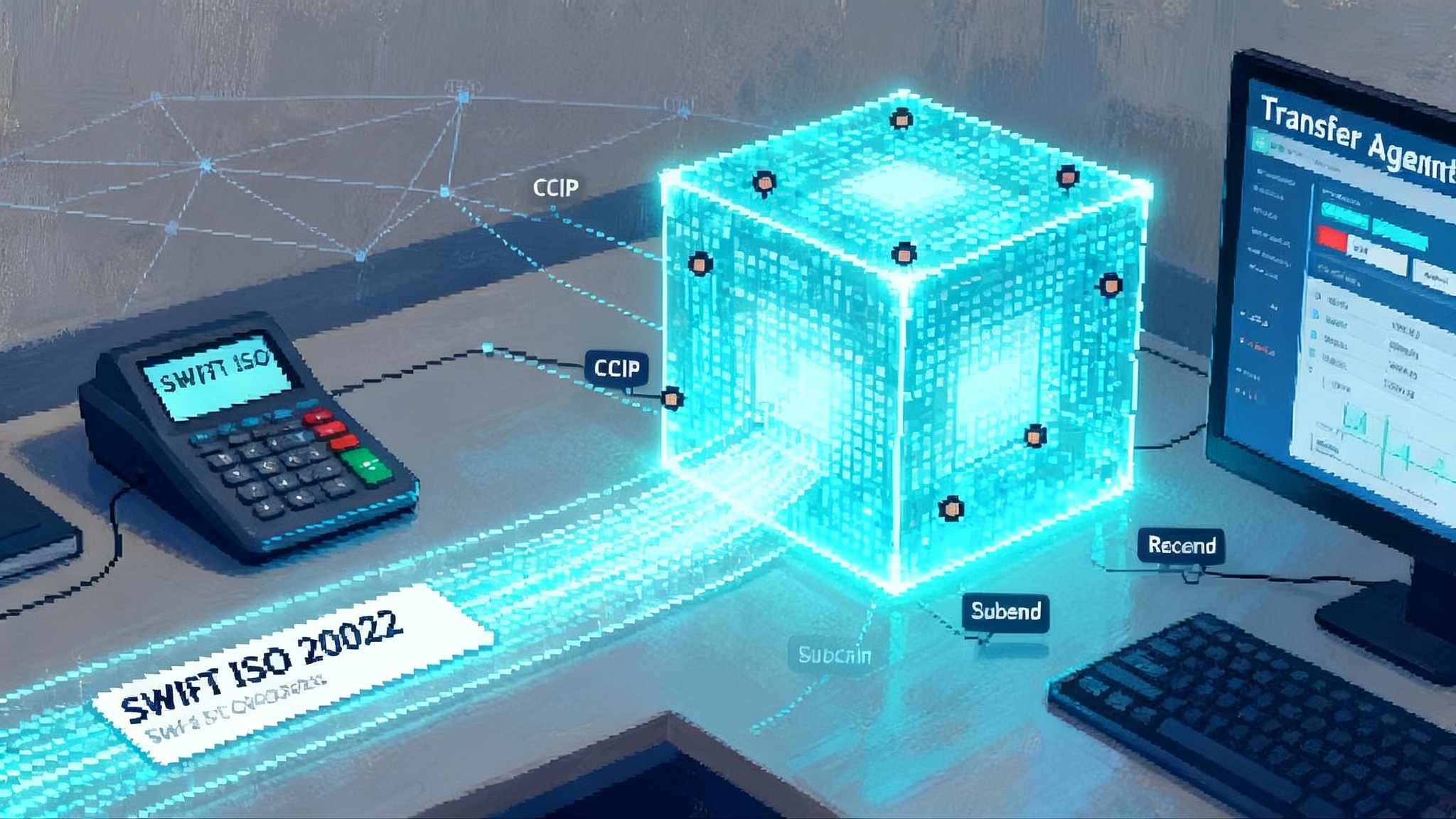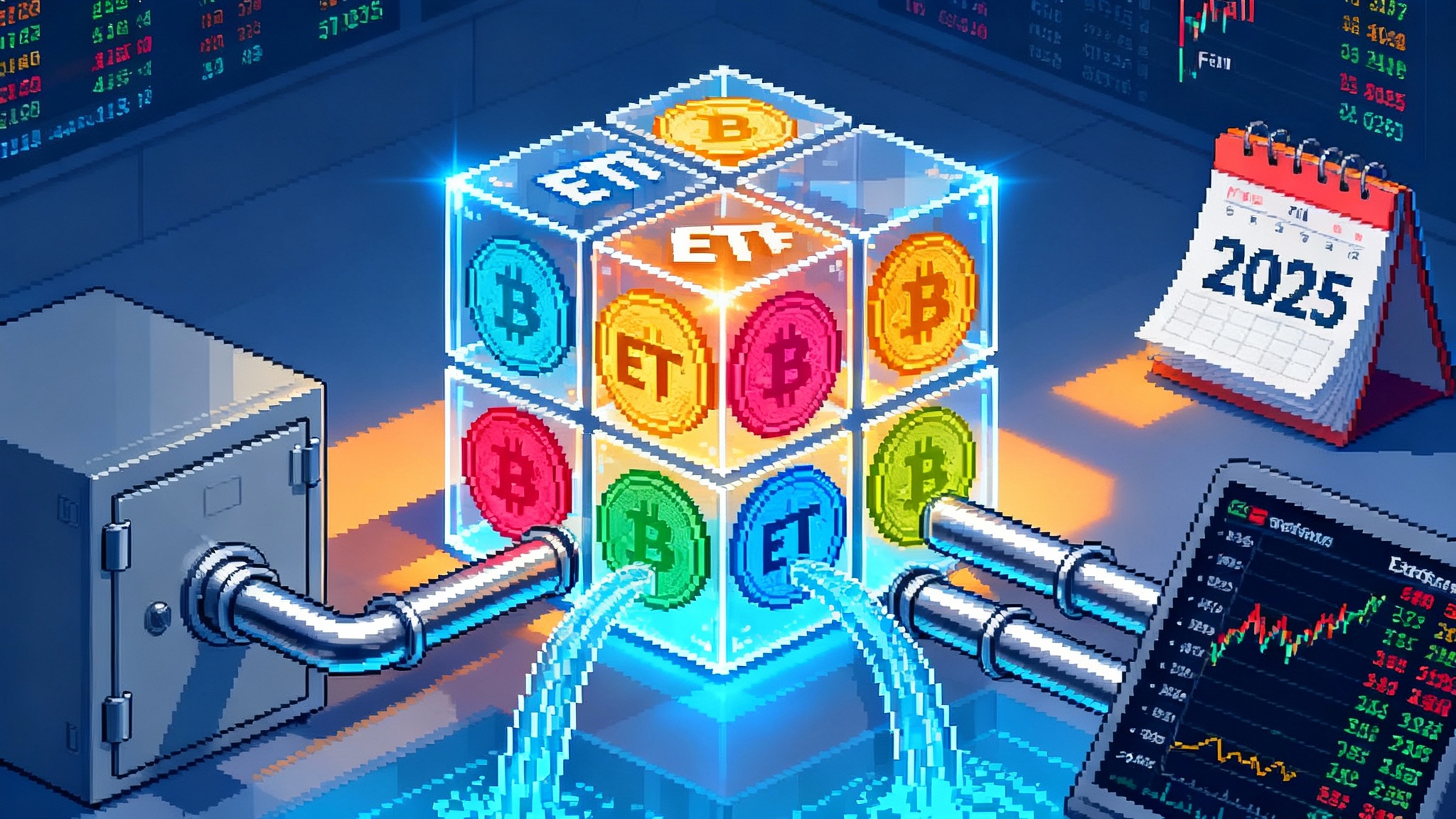ETF Superweek: How a Solana Approval Rewires Onchain Liquidity
October 16, 2025 is the next SEC deadline for spot Solana ETFs. If approved, new TradFi inflows could reshape staking yields, liquid staking and restaking markets, validator revenues, DeFi liquidity, and MEV. Here is what happens next and how to build for it.

The week that can change Solana’s market plumbing
Call it ETF Superweek. The Securities and Exchange Commission faces final October clocks on proposals to list spot Solana funds. One of those clocks is set for October 16, 2025, tied to a Cboe BZX rule change to list 21Shares’ core Solana product, based on the Federal Register’s designation of a longer period for action. That filing puts an unmistakable circle on the calendar and has market desks on standby. Federal Register extension to October 16, 2025.
Why does this matter for onchain liquidity, not just for brokerage accounts and tickers? Because a spot exchange traded fund is a capital bridge. It funnels dollars from retirement accounts and wirehouse platforms into the asset, and the way that plumbing is laid determines where coins sit, how they move, and which yields get paid to whom.
In this piece we translate that plumbing into concrete changes you can expect across Solana’s staking yields, liquid staking and restaking markets, validator economics, DeFi liquidity and total value locked, and maximal extractable value. We then map three regulatory scenarios and close with a 90 day builder playbook.
What a spot ETF actually does to onchain liquidity
Think of a spot ETF as a two sided lock. On the traditional finance side, authorized participants, the market makers empowered to create and redeem ETF shares, take in client demand through broker dealers. On the crypto side, those same firms must source Solana and deliver it into the fund’s custodian or deliver cash that is used to buy Solana through trading partners. Most United States spot crypto funds to date have used cash creations, which means the fund sponsor receives dollars from authorized participants and instructs a designated market maker to buy the underlying asset. If spot Solana funds follow that pattern, new equity inflows translate into market orders and negotiated over the counter buys that remove Solana from exchange order books and deposit it into the fund’s cold storage.
Two things then happen at once:
- Circulating liquidity on exchanges and in DeFi pools tightens, since a portion of the float moves into passive custody that historically does not stake or rehypothecate.
- Dollar value of onchain collateral rises if price is bid up by persistent creations, which mechanically lifts total value locked and risk capacity for lending, perps margin, and market making shelves.
The net effect is a tug of war between fewer coins available for active use and higher dollar value per coin. That tug of war will show up not as a single number, but as spread behavior, borrow rates, and slippage at size across venues.
Five pressure points to watch
1) Staking yields and the staking ratio
Solana’s base issuance is paid to stakers. If a meaningful chunk of the float sits unstaked inside an exchange traded fund, the share of issuance paid to the remaining stakers rises. That dynamic is simple arithmetic. Picture a pizza that is the same size every epoch. If fewer diners show up, each plate gets a bigger slice. The same is true for priority fee and tip flows that are shared by many liquid staking pools when validators run optimized clients.
Implication: if exchange traded funds do not stake, the network’s staking ratio drifts down, the nominal annual percentage rate for stakers edges up, and liquid staking tokens become more attractive carry assets. Expect a steeper yield versus convenience curve. Native stakers may see higher raw issuance share, while liquid staking tokens, or LSTs, trade a premium for instant exit and DeFi utility.
Action: LST issuers should pre-negotiate larger market making lines and deeper two sided quotes across the top LST trading pairs. If carry improves, risk desks will want to warehouse more LST inventory to earn the spread between staking yield and funding costs.
2) Liquid staking and liquid restaking tokens
Liquid staking tokens such as Marinade’s mSOL, Jito’s JitoSOL, Socean’s scnSOL, and BlazeStake’s bSOL exist to turn staking rewards into a liquid position that can be used as collateral. If exchange traded fund coins sit idle, LSTs become the primary instrument to transmit higher staking yields back into DeFi.
Restaking, delivered through emerging Solana native designs, adds a second yield leg by letting holders opt in to secure additional services. Liquid restaking tokens, or LRTs, wrap that optionality into a composable receipt. For a broader look at how restaking primitives scale across ecosystems, see our take on portable AVSs on Base.
Expect the following shifts if approvals land:
- Demand shift: Portfolio managers that cannot or will not hold raw Solana may still finance LST and LRT inventory via structured notes, giving trading firms a mandate to put these receipts to work as carry assets.
- Discount and premium dynamics: If redemptions queue up during volatility, some LSTs could trade at a small discount to spot. Conversely, in a tight borrow market, LSTs can command a premium.
- Collateral framework upgrades: Lending protocols and perps venues will revisit haircuts and liquidation logic for LSTs and LRTs to reflect higher, more stable cash flows, but also contract risk.
Action: LST and LRT teams should publish transparent reward source breakdowns and validator sets, then align with major venues on collateral factors and oracle inputs before the first large creation week.
3) Validator economics and commission strategy
When network activity rises, validators earn more from priority fees and tips in addition to issuance. On Solana, specialized clients and tip routing have become significant. A rising price and more user flow can lift validator revenue, but it also magnifies reputational risk around missed slots, censorship concerns, and fee policies. For performance context, review our analysis of Solana’s Firedancer client path.
Approval would likely trigger more stake movement toward validators that advertise low downtime, competitive commissions, and proven tip performance. New validators may attempt to spin up to capture delegated stake, but the economics will favor operators that already run tight infrastructure and have relationships with liquid staking protocols.
Action: Operators should set and signal a commission glide path, keep machine capacity ahead of possible load spikes, and adopt order flow protections where available. Validators that publish real time dashboards for missed slots, effective tips per epoch, and commission history will attract institutional delegations.
4) DeFi liquidity and total value locked
ETF driven inflows have a two step effect on DeFi. First, if price rises, total value locked goes up in United States dollar terms. Second, coins move from hot to cold storage. The first acts like inflating the stadium. The second removes some chairs. Where price appreciation dominates coin sequestration, you see deeper dollar books and more borrow capacity. Where sequestration dominates, you see higher borrow rates for Solana, fatter spreads, and bigger price impact at size.
Expect lending markets to widen the slope between supply and borrow for Solana during the first creation waves. Perps venues will see higher funding volatility as directional traders and basis desks redebalance between onchain and centralized venues.
Action: Market makers should pre-seed SOL-LST-stable tri pools with incentive budgets that can be turned on quickly. Perps venues should test funding clamps and insurance fund buffers for large, directional days.
5) Maximal extractable value risk and opportunity
More retail flow almost always means more arbitrage and searcher activity. That can push up the share of validator income from tips, but it also increases the odds that uninformed users get a worse price than they expect. Wallets and venues should expect an uptick in sandwich attempts around volatile memecoin listings and reweightings.
Action: Default to MEV aware routing wherever possible, include pre trade slippage warnings tied to pool depth, and give users a one click way to route through protected lanes when they swap during volatile windows. Validators and searchers can compete on fair ordering guarantees without sacrificing throughput by leaning on bundle semantics and policy rather than ad hoc filters.
Three regulatory scenarios
Scenario A: Approval in October
Mechanism: Authorized participants submit cash, market makers accumulate Solana across centralized and over the counter markets, and the custodian receives coins into cold storage. Expect a front loaded creation burst in the first week as wirehouse platforms allocate model portfolios and crypto native funds front run index inclusion.
Liquidity impact in the first month:
- Exchange and onchain order books thin in coins but thicken in dollars, especially near round number price levels.
- Borrow rates for Solana jump, then normalize as basis desks redeploy inventory and LST issuers scale primary liquidity.
- Staking annual percentage rates drift higher as the staking ratio dips, with LSTs passing a large share of that improvement through to holders.
Knock on effects by day 60 to 90:
- LRTs gain share as funds seek a second yield leg that does not require running validator infrastructure.
- Validators with clear fee policies and strong uptime gain delegated stake. Commission outliers lose share.
- DeFi risk systems get tested. Liquidation cascades run cleaner where LST collateral parameters were tuned in advance.
Scenario B: Delay with a faster new path
The Commission recently approved generic listing standards for spot commodity and digital asset funds, which lets exchanges list certain crypto exchange traded funds without bespoke, case by case 19b-4 orders. The practical impact is a faster route once an issuer’s registration statement is effective, with timelines that can be as short as 75 days from filing. SEC paves the way with new listing rules.
If Solana proposals slip past October 16 into this new regime, the pause will be measured in weeks rather than quarters. In that case, the market will price a near dated approval and many of the approval dynamics above will begin early as desks position inventory. The difference is that onchain liquidity stress spreads out over a longer pre launch window, giving LST and lending venues more time to lift limits. For policy context and builder guardrails, see our guide to building U.S. onchain compliance.
Scenario C: Denial
Denial would remove the forced buyer, at least for now. Near term, Solana borrow rates fall, creation hedges unwind, and LSTs lose some carry premium. Medium term, the market will watch the futures complex, enforcement posture, and the next administrative steps. If the denial leans on surveillance or custody language that can be addressed, issuers will iterate. If it leans on classification, timelines extend.
For builders, denial is a timing event, not an existential one. The long arc is toward convergence between regulated wrappers and onchain assets as legal frameworks mature. Keep shipping.
The first 90 days builder playbook
Here is a concrete checklist teams can run in the ninety day window bracketing Superweek.
-
Liquidity providers and market makers
- Pre agree inventory ranges and drawdown triggers with sponsors and LST issuers so you can lean into both creation days and redemption days without starved books.
- Quote top pairs in size at two or more venues, and set shared error budgets for price impact at target ticket sizes. If spread blows out past budget, auto rotate incentives rather than nurse individual pools.
-
LST and LRT teams
- Publish a single page explainer that shows reward composition by source, validator set concentration, and emergency procedures. Update it weekly for the first month.
- Negotiate collateral factors and oracle sources with leading money markets in advance. Target conservative factors on day one, with pre approved steps to increase if realized volatility is tame.
- Offer primary market liquidity windows for large tickets. Treat it like a daily or twice daily auction so big allocators can get in and out without cliff risk to pools.
-
Validators
- Commit to a public commission policy through year end and pin it to the top of your socials and documentation. Reliability plus predictability will attract stake.
- Instrument and publish dashboards for effective tips per epoch, missed slots, and client version. Invite major stake pools to monitor the same panels.
- Coordinate with reputable neutral relays and bundle infrastructure to reduce griefing while preserving fair competition among searchers.
-
Wallets and retail venues
- Default to MEV aware routing for volatile pairs and give users visual warnings when they opt out. Include one click protected routes for size trades.
- Surface staking and restaking yields in context. Show the delta between holding raw Solana, native staking, a liquid staking token, and a liquid restaking token, including fee disclosures.
-
Risk and data teams
- Stand up daily dashboards that track exchange traded fund creations and redemptions, spot and futures basis, borrow curves, and LST discounts or premiums. The point is to see stress before it hits your users.
- Run red team simulations of oracle delays, thin book gaps, and LST redemption queues. Practice pausing incentive programs cleanly rather than reacting piecemeal.
-
Product teams
- Build structured carry products that package LST yield with defined downside buffers. Keep these simple. Use plain language and predictable settlement.
- Prepare onchain basis trade rails that help desks move between perps, centralized futures, and LST collateral without brittle bridges or manual steps.
How this opens the door for the next wave
A Solana approval would not just pull dollars into one network. It would demonstrate that the Commission’s generic listing framework and surveillance expectations can accommodate non bitcoin, non ether assets when custody, market surveillance, and futures market signals align. That last point matters. When a futures contract listed on a regulated exchange trades for months without incident, it supplies the data and oversight channel regulators prefer.
In practical terms, a Solana decision in October sets a template for the next filings. Expect attention to turn to assets with credible onchain activity, visible validator sets, and custody processes that pass institutional checks. Issuers will prioritize tokens with either established, regulated futures footprints or clear market surveillance agreements. This is the flywheel. Futures listings make spot funds easier to justify. Spot funds, once live, create price discovery and liquidity that make futures more useful.
For developers across chains, that means the bar is now visible. Document your market structure, improve custody tooling, and ensure validator behavior is observable and explainable. Each improvement raises the odds that a wrapper product can exist without compromising investor protection.
The bottom line
An approval in Superweek would not be a confetti moment. It would be a reconfiguration of pipes. Coins move from hot to cold storage. Yields redistribute to those who actively stake and to those who run infrastructure well. DeFi books breathe in dollars but will need to manage coin tightness. Searchers and validators earn more, and users need better protection by default.
If you build on Solana, the path is clear. Publish the numbers that matter. Pre wire the venues where your users will arrive. Treat the first ninety days as the most important product launch window of the cycle. Do that, and Superweek becomes the moment your onchain app finally plugs into the biggest capital base in the world.





